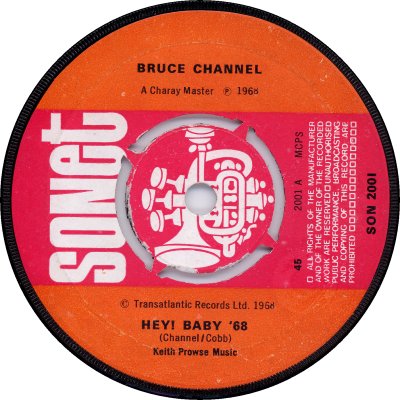
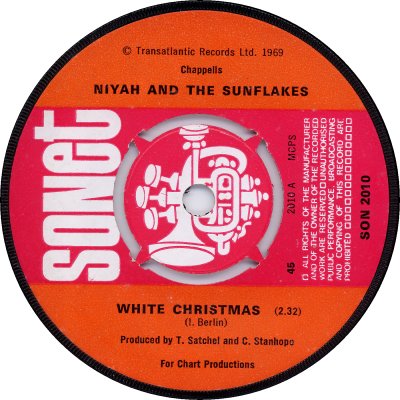
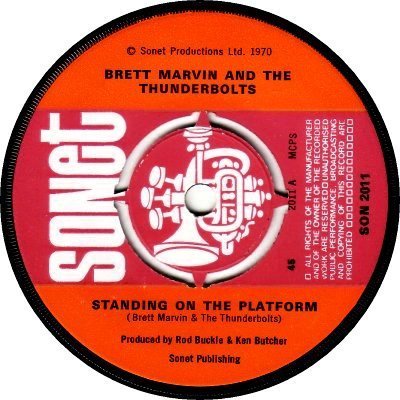
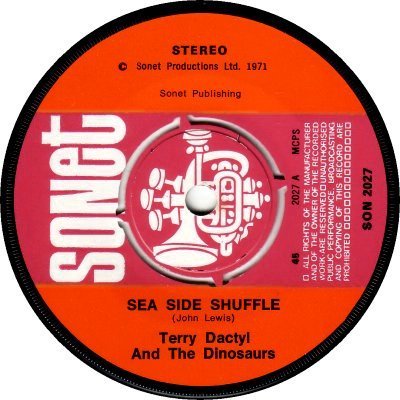
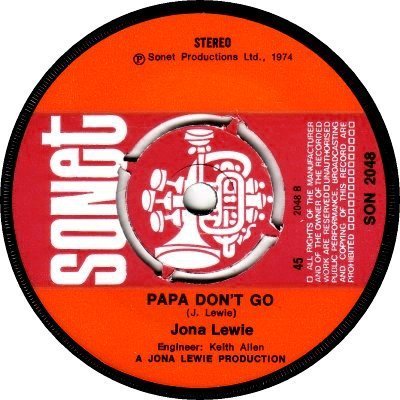
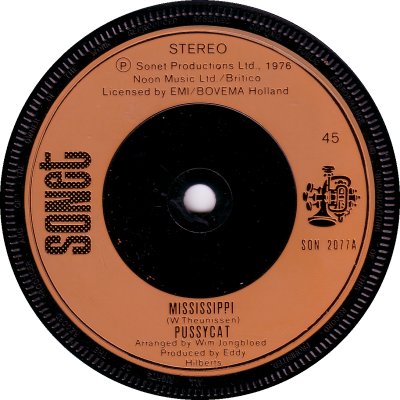
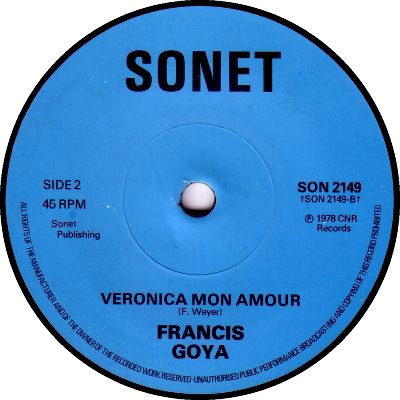
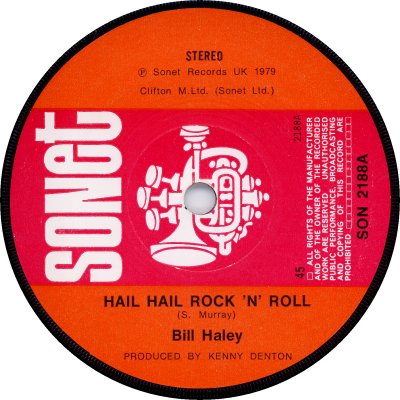

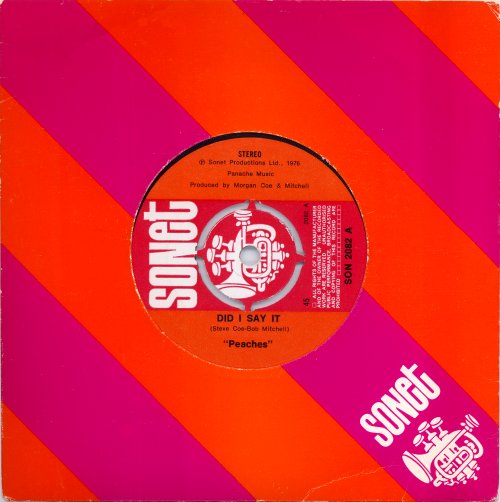
Scandinavian. According to a retrospective in 'Billboard' of the 11th of December 1976 the seeds of Sonet were sown in Denmark in 1953 when Karl Emil Knudsen set up Storyville Records with the help of fellow Jazz enthusiast Anders Dyrup, who was his partner in the concert agency Jazz Jamboree. In 1955, during a brief estrangement between the pair, Dyrup started his own label, Sonet; when he and Knudsen got back together again the two labels were run in tandem. In that same year Sven Lindholm and Gunnar Bergson began to import Jazz records from the American label Vogue into Sweden. They formed the 'Scandinavian Record Company' in late 1955, and made a deal to release Vogue and Sonet records in Sweden. Finland came on board not long afterwards, when Harry Orvomaa, managing director of the Scandia Music Company, formed links with Knudsen, Dyrup, Lindholm and Bergson. Finally, in 1956, the Egil Monn Iversen company, of Norway, was brought into the fold and coverage of Scandinavia was complete. The four companies retained their independence, developing their local repertoire and carrying out their own licensing deals, but they co-operated fully in areas such as promotion and the release of third-party product.
By 1956 Knudsen and Dyrup has established their company as Dansk Grammofonpladeforlag. Initially they licensed some overseas product from small independent companies such as the UK's Melodisc, but they took a step forward with acquisition of the rights to material from the larger American labels Roulette and Chancellor. They also laid the foundations of a working relationship with Chris Blackwell, which was to bear fruit in the form of a link with his Island Records later on. Elsewhere, Bergson and Lindholm began to make their own recordings, for release on Sonet in Sweden; in addition a deal with top Pop producer Gustav Winckler led to an influx of his artists and gave Sonet a boost. In 1960 they changed the name of their company from the Scandinavian Record Company to Sonet Grammofon AB. Then in 1963 Knudsen bought Dyrup's share in the company and took sole control. 1964 saw the acquisition by Sonet of another Jazz label, Center Records; Center's managing director Dag Haeggkvist joined the Sonet management team. There were other changes: again in 1964 the Egil Monn Iversen company was bought by Arne Bendiksen, who changed its name to Arne Bendiksen A/S. The Danish part of the quartet, which had set the whole venture in motion, continued to be important but the administration was moved to Sweden because of that country's predominance in the Scandinavian market.
The first news of Sonet's making a move onto the UK scene came in 'Record Retailer' of the 8th of January 1968, which said that a new company called Sonet Productions was being set up here by Sonet Grammofon; its remit would extend to publishing. 'RR' of the 29th of May was able to add that Sonet Productions would be managed by Rod Buckle and that there were plans to launch the Sonet label in April, through Transatlantic. In the event the launch was delayed. 'Billboard' of the 15th of June said that the London branch had been set up in Reece Mews, South Kensington, and that Sonet's publishing division would be run by Apollo Music from the same address. It gave a new launch date of August for the label and confirmed that Transatlantic would be handling it. The first Sonet single, 'Hey! Baby '68' b/w 'Come On Baby' by Bruce Channel, finally came out in October, with a catalogue number of SON-2001.
Sonet made a steady if unspectacular start here. The Billboard retrospective of the 11th of December 1976 observed that the UK arm was required to be self-supporting at first, which led to it concentrating on albums rather than singles. As was the case with the Swedish parent company, the material issued tended towards specialist markets such as Jazz, Blues and Folk; sales weren't big but they were sufficient, and publishing remained a priority. Before too long British artists were signed, Brett Marvin & The Thunderbolts joining the roster in 1970. The Bretts provided Sonet with its first singles success, after a fashion: their 'Sea Side Shuffle' b/w 'Ball And Chain' flopped when released on Sonet (SON-2027) in 1971, under the alias of Terry Dactyl & The Dinosaurs, but the following year it was licensed to Jonathan King for release on his UK label and became a summer hit, reaching the No.2 spot as UK-R-5.
The first three-and-a-bit years of UK Sonet passed fairly uneventfully. One development of note was the introduction of the specialist Rock 'n' Roll / R&B label Specialty (q.v.) in November 1969, after Sonet picked up the rights to the American company's classic catalogue ('RR', 8th November). Another came when Transatlantic moved to EMI for pressing and distribution, which it did on the 1st of September 1970, Sonet and Specialty moving with it ('RR', 29th August) - for some reason a block of singles numbers, 2018 to 2026, appears to have been unused, and only four Sonet singles surfaced in 1971. A bigger move took place on the 1st of April 1972, when Sonet parted company with Transatlantic and moved to Pye ('Music Week', 11th March), again on a manufacture, marketing and distribution deal rather than a licensing one. There was something of a lull on the singles front after that, the next one on Sonet not coming out till December. The first two Specialty singles were however re-pressed and re-released in July, and there were around a couple of dozen albums issued on Sonet and Specialty as a whole. In addition to his duties with Sonet, Rod Buckle was able to spend time working for Bronze and Gem ('BB', 18th September 1971) and he became the international representative for Bernard Chervy's MIDEM and VIDCA events ('BB', 25th March 1972).
In the autumn of 1972 it was announced that Sonet intended to launch a 'Golden Oldies' series of singles, retailing at 50p and featuring records by Little Richard, Sam Cooke and Lloyd Price ('MW', 7th October). The series eventually reached the shops in March of the following year, and it came in the form of an additional ten singles being added to the Specialty catalogue. 'BB' of the 18th of November 1972 noted that Sonet and Specialty had joined together to open a London office which would represent Specialty here and in Europe, presumably in an attempt to bring it to greater prominence. According to the 'MW' article of the 7th of October, future Sonet singles were to have a 45 second commercial for the company's LP releases tagged onto the end of them, but thankfully that idea seems to have been dropped. Another announcement in the same article concerned plans for a new label, 'Kicking Mule', which was to be created by Sonet in conjunction with Ed Dennison and Stefan Grossman and was to feature contemporary guitar music. As it turned out, the first Kicking Mule records didn't appear until late summer the following year ('MW', 18th August 1973). In passing, it should be noted that Sonet's UK connection was proving profitable for the parent company, thanks to licensing deals being made for Sonet and its associates to handle some big independent labels in Scandinavia - 'BB' of the 18th of November 1972 remarked that equal proportions of its turnover had come from local and foreign productions and that Island artists Cat Stevens, Uriah Heep and Emerson, Lake & Palmer had made big contributions. Licensing of product for release in the Scandinavian territories was to provide lucrative into the '80s, with the likes of Chrysalis, A&M and Mute signing deals.
Sonet made its first appearance in the Singles Chart as late as 1974, Sylvia's 'Y Viva Espana' b/w 'Let Me Love You' (SON-2037; 1/74) finally doing the trick. Although released in January, the single didn't enter the charts until October, but it eventually rose to the No.4 position. Sylvia's follow-up, 'Hasta La Vista' b/w 'Follow Me' (SON-2055; 4/75) nibbled at the Top 40, but a couple of subsequent attempts failed to chart. Rod Buckle abandoned his outside interests to work full-time for Sonet ('BB', 5th October 1974), and from 1975 onwards the company increased the number of singles it issued per year. Despite putting out some interesting records in a variety of styles, it found further Chart successes hard to come by. It did however enjoy a No.1, in the form of 'Mississippi' b/w 'Do It' by Pussycat (SON-2077; 4/76), which was licensed from EMI Netherlands - if you happen upon a Sonet single in a charity shop it's almost certain to be that or 'Y Viva Espana', both of which were million-sellers. The follow-up, 'Smile' b/w 'What Did They Do To The People' (SON-2096; 10/76) reached a respectable No.24 placing, but further Pussycat singles made no impression. There were a couple of one-off hits as well: Hank C. Burnette's frantic instrumental 'Spinning Rock Boogie' b/w 'Don't Mess With My Ducktail' (SON-2094; 10/76) got as high as No.23, while Danny Mirror's 'I Remember Elvis Presley' maxi-single (SON-2121; 9/77) peaked at No.4 thanks to public grief at Presley's death - that single came out on the Stone label (q.v.), which appears to have served more or less as an outlet for licensed novelty items. In addition to Stone there was another new label, Sawmills (q.v.), which featured records produced by the studio of that name. Unlike Stone it turned out to be rather short-lived.
'BB' of the 22nd of July 1978 quoted Rod Buckle as saying that following the success of 'Spinning Rock Boogie' he was expecting a Rockabilly explosion in the UK and was looking for more material of that kind to release. As it turned out, the explosion was delayed for a year or two and its fruits on Sonet in the meantime were fairly meagre. Buckle was also quoted as saying that Sonet had a good roster of artists but that it still needed hits, either one-offs or ones that were more long lasting. Sadly, despite a generous release schedule there were no more hits for the company until 1981, when 'Just When I needed You Most' b/w 'Never Let Me Go' by Barbara Jones (SON-2221; 1/81) and Gidea Park's 'Beach Boy Gold' b/w 'Lady Be Good' (SON-2162; 8/81) ended the drought. The former, on a new label, A-Side, just missed out on a Top 30 spot, but the latter, on Stone, reached the No.11 position. On the album front, however, Sonet continued to do well from the '70s into the '80s, and it made enough of an impression as a whole for Billboard to do another retrospective feature on it, this time in 1986 ('BB', 5th December). The company maintained its independence into the 1990s but was acquired by Polygram in 1991.
Sonet's LP releases covered an admirably wide spectrum of genres, mainly non-mainstream ones. As well as the Jazz, Blues and Folk mentioned above it extended into areas as disparate as Cajun music and Scandinavian Rock. It singles weren't quite as accommodating but there was enough variety in them to make picking up the more obscure ones an interesting occupation for the collector. A good number were produced 'in-house', either in Scandinavia or Britain, but many were licensed from companies in America or Europe. As you may have gathered, Sonet's singles were numbered in a SON-2000 series; those numbers reached SON-2357 in 1991. The vast majority of singles came in white paper sleeves until the end of the '70s, at which point picture sleeves started being used. A few, however, appear to have come in card company sleeves of the kind used in Sweden - my copy of SON-2082 was one such (10), and Robert Bowes has kindly sent a picture of SON-2006 similarly sleeved.
As far as label designs are concerned, just one served from 1968 until 1983 - the dull, blue-coloured label (7) seems to have been a one-off, and is in the style of those which were used for Stone releases. There were minor variations. The first half-dozen or so releases had a copyright credit to Transatlantic Records below the stripe (1); that credit moved to the top for SON-2010 in late 1969 (2). With SON-2011, in the spring of 1970, the copyright credit changed to Sonet Productions (3), and then with SON-2013 the titles and artist names, which had been separated by the stripe, came together at the bottom of the label (5), where they were to remain - there are occasional exceptions to all of the above. Finally, as far as our decade is concerned, in 1979 'Sonet Productions Ltd' became 'Sonet Records UK' (8). Demand for 'Mississippi' must have been too great for Pye's presses to cope with, as some copies can be found with injection moulded labels (6) - these were contract pressings, carried out by Phonodisc. Labels of demo copies were only given special markings during the first part of the Transatlantic period, when they were overprinted with a solid elongated black 'A' (9). SON-2014 was the final single to have its demos marked.
As an independent without its own manufacturing plant, Transatlantic had its pressings made by a number of other firms, an arrangement which covered Sonet and Specialty records during Sonet's time with that company. The few early ones that I have seen in the vinyl have been CBS pressings, judging by the style of the matrix numbers and the relatively wide dinking perforations (1, 2, 3). When Transatlantic turned to EMI for manufacture, in the autumn of 1970, the perforations grew narrower (4) or, more usually, were absent altogether. After the move to Pye, Pye naturally took over manufacture, and when there were perforations they were wide again (5). The discography below only covers up to the end of 1979. It is admittedly gappy, but some of the gaps appear to be down to the numbers not being used. As can be seen, some records were issued on the Stone or Sawmills labels.



Copyright 2006 Robert Lyons.

